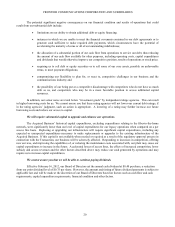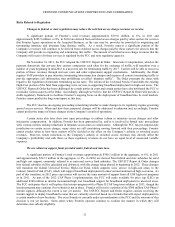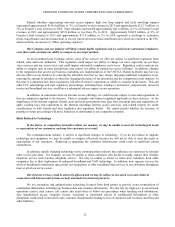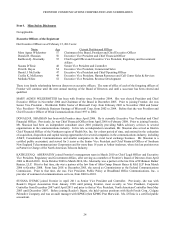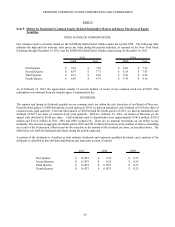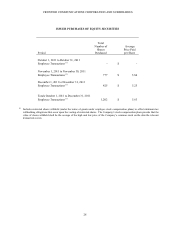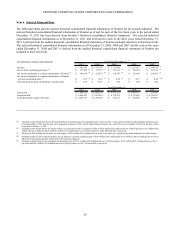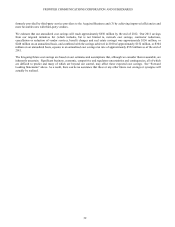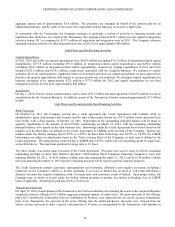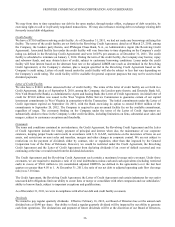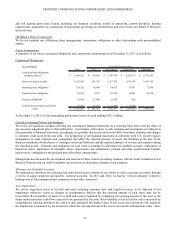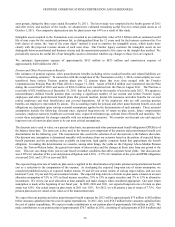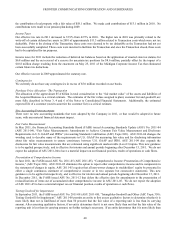Frontier Communications 2011 Annual Report Download - page 33
Download and view the complete annual report
Please find page 33 of the 2011 Frontier Communications annual report below. You can navigate through the pages in the report by either clicking on the pages listed below, or by using the keyword search tool below to find specific information within the annual report.
FRONTIER COMMUNICATIONS CORPORATION AND SUBSIDIARIES
30
Item 7. Management's Discussion and Analysis of Financial Condition and Results of Operations
Forward-Looking Statements
This annual report on Form 10-K contains forward-looking statements that are subject to risks and uncertainties that could
cause actual results to differ materially from those expressed or implied in the statements. Statements that are not historical
facts are forward-looking statements made pursuant to the safe harbor provisions of The Private Securities Litigation Reform
Act of 1995. Words such as “believe,” “anticipate,” “expect” and similar expressions are intended to identify forward-
looking statements. Forward-looking statements (including oral representations) are only predictions or statements of current
plans, which we review continuously. Forward-looking statements may differ from actual future results due to, but not
limited to, and our future results may be materially affected by, potential risks or uncertainties. You should understand that it
is not possible to predict or identify all potential risks or uncertainties. We note the following as a partial list:
• Our ability to successfully integrate the remaining operations and systems of the Acquired Business into Frontier’s
existing operations and systems;
• The risk that the growth opportunities from the Transaction may not be fully realized or may take longer to realize than
expected;
• Our indemnity obligation to Verizon for taxes which may be imposed upon them as a result of changes in ownership of
our stock may discourage, delay or prevent a third party from acquiring control of us during the two-year period ending
July 2012 in a transaction that stockholders might consider favorable;
• The effects of increased expenses incurred due to activities related to the integration of the Acquired Business;
• Our ability to maintain relationships with customers, employees or suppliers;
• The effects of greater than anticipated competition requiring new pricing, marketing strategies or new product or service
offerings and the risk that we will not respond on a timely or profitable basis;
• Reductions in the number of our access lines that cannot be offset by increases in High-Speed Internet (HSI) subscribers
and sales of other products and services;
• The effects of ongoing changes in the regulation of the communications industry as a result of federal and state
legislation and regulation, or changes in the enforcement or interpretation of such legislation and regulation;
• The effects of any unfavorable outcome with respect to any current or future legal, governmental or regulatory
proceedings, audits or disputes;
• The effects of changes in the availability of federal and state universal funding to us and our competitors;
• The effects of competition from cable, wireless and other wireline carriers;
• Our ability to adjust successfully to changes in the communications industry and to implement strategies for growth;
• Continued reductions in switched access revenues as a result of regulation, competition or technology substitutions;
• Our ability to effectively manage service quality in our territories and meet mandated service quality metrics;
• Our ability to successfully introduce new product offerings, including our ability to offer bundled service packages on
terms that are both profitable to us and attractive to customers;
• Changes in accounting policies or practices adopted voluntarily or as required by generally accepted accounting
principles or regulations;


